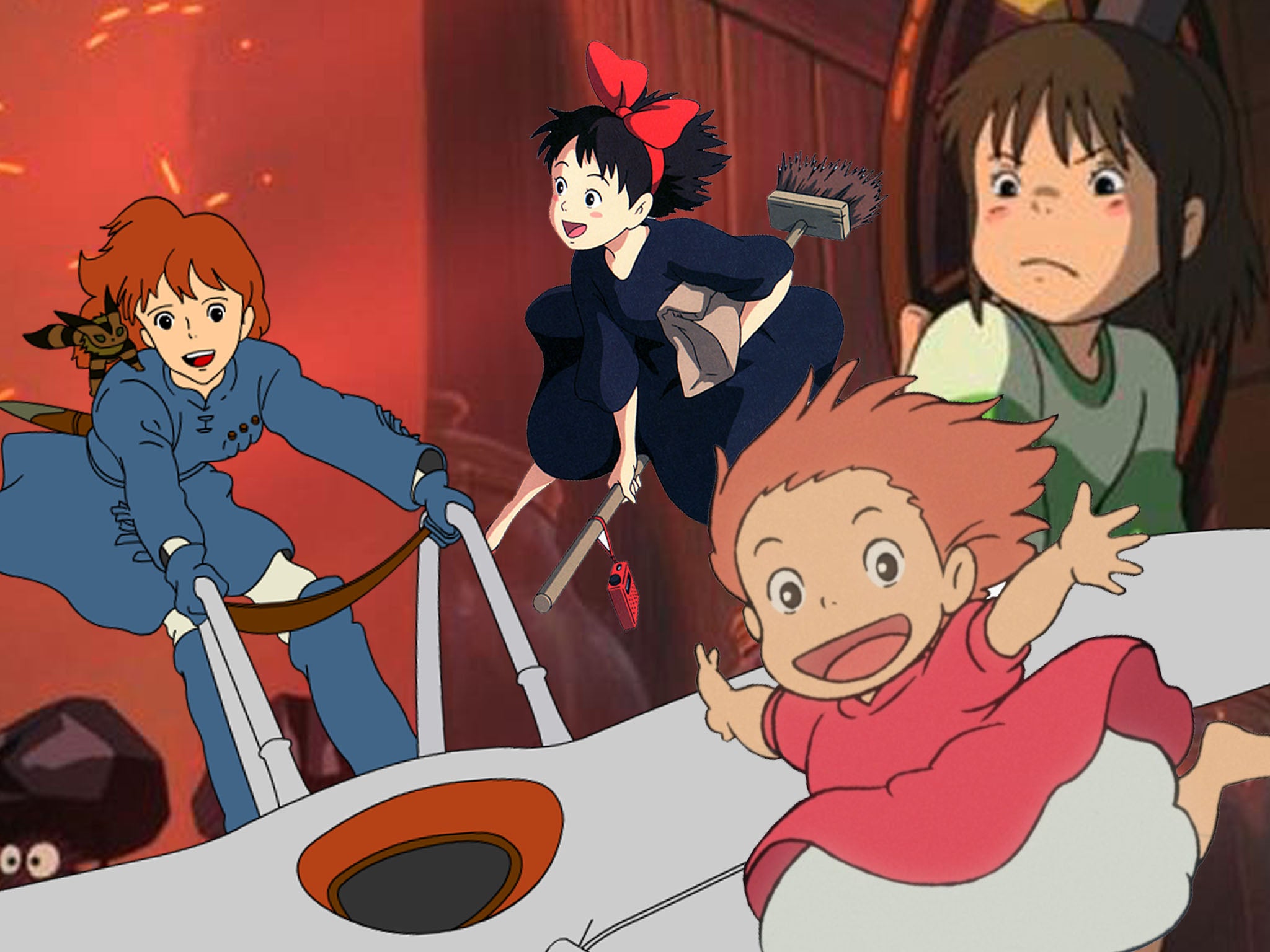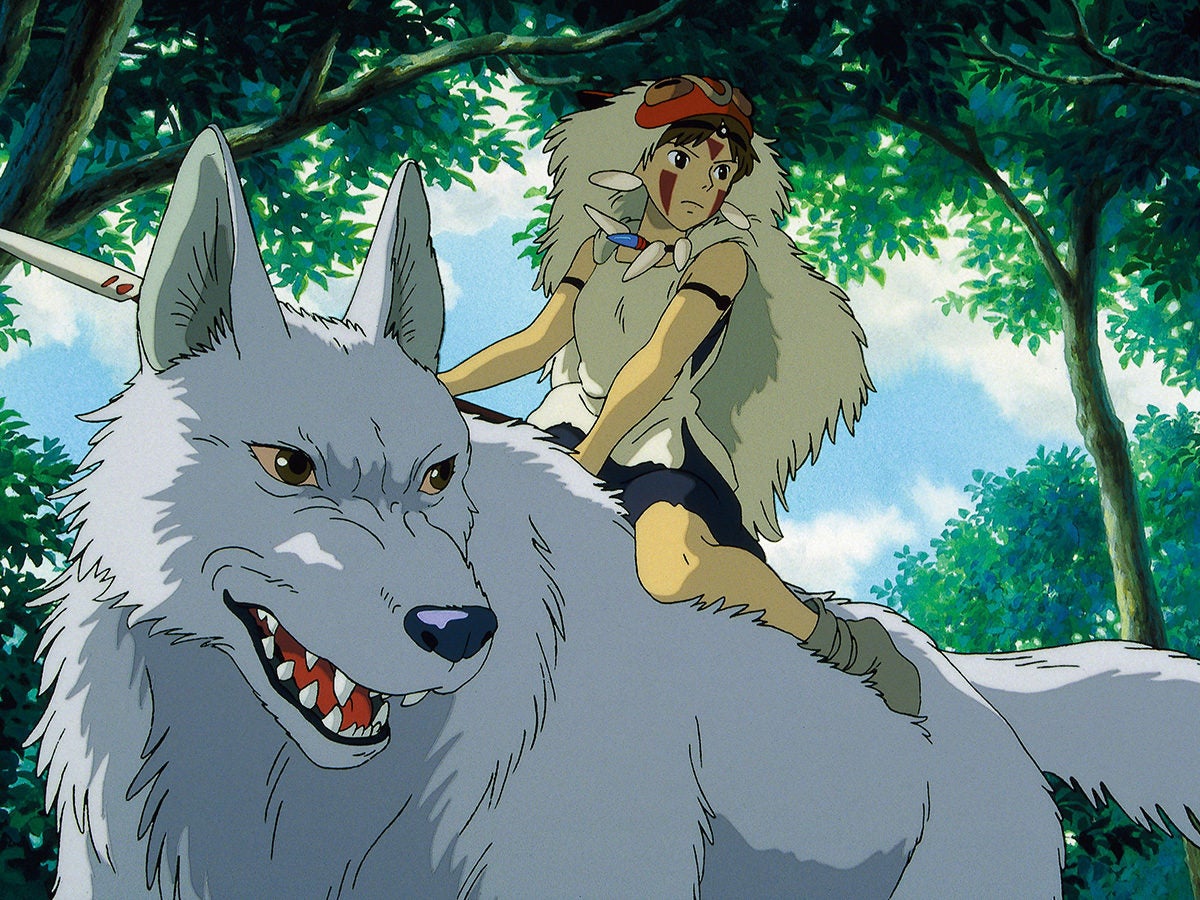‘It’s good to be alive’: The Studio Ghibli films are coming to Netflix at just the right time
February is the cruellest month, writes Lucy Jones. What better reason to hibernate and enjoy the dark evenings than with fantastical masterpieces at our fingertips?


Your support helps us to tell the story
From reproductive rights to climate change to Big Tech, The Independent is on the ground when the story is developing. Whether it's investigating the financials of Elon Musk's pro-Trump PAC or producing our latest documentary, 'The A Word', which shines a light on the American women fighting for reproductive rights, we know how important it is to parse out the facts from the messaging.
At such a critical moment in US history, we need reporters on the ground. Your donation allows us to keep sending journalists to speak to both sides of the story.
The Independent is trusted by Americans across the entire political spectrum. And unlike many other quality news outlets, we choose not to lock Americans out of our reporting and analysis with paywalls. We believe quality journalism should be available to everyone, paid for by those who can afford it.
Your support makes all the difference.The news this week that Netflix UK has bought the rights to the Studio Ghibli catalogue was music to everyone’s ears (except soon-to-be-rival streaming service Disney+, one imagines). From 2 February, 21 films will be available, including Howl’s Moving Castle, The Tale of The Princess Kaguya, Kiki’s Delivery Service, My Neighbour Totoro and Porco Rosso. To celebrate, cinemas across Britain will screen the much-loved Spirited Away at the end of January and Princess Mononoke at the end of February.
This latest acquisition is exactly what we need right now. For a start, February is the cruellest month, and what better reason to hibernate and enjoy the dark evenings than with fantastical masterpieces at our fingertips? It will be like welcoming a living room version of a ghibli – the Libyan-Arabic word for a hot wind of the Sahara desert – into our homes. (Hayao Miyazaki and Isao Takahata used the word to name their studio because they wanted the films to “blow a new wind through the anime industry”. Which they did. And some.)
But more widely, the Ghibli canon speaks to our times. Key concerns and themes of Takahata and Miyazaki’s work are playing out in today’s world – with Hollywood only just catching up.
Often the heroes are female, with complex and nuanced personalities not tied to romance. From Princess Mononoke to the sisters in My Neighbour Totoro, Sophie to Kiki, and even the more incidental characters – the women who repair Porco’s plane; the female workers in the iron works in Mononoke – it’s standard for a girl or woman to be a significant part of the plot.
“I’ve become sceptical of the unwritten rule that just because a boy and girl appear in the same feature, a romance must ensue,” said Miyazaki. “Rather, I want to portray a slightly different relationship, one where the two mutually inspire each other to live – if I’m able to, then perhaps I’ll be closer to portraying a true expression of love.” As a parent who is frustrated by the vast majority of characters in my infant daughter’s picture books having masculine pronouns, even if they are frogs or cats or caterpillars, this is refreshing.
Secondly, many of the films centre around the conflict between humans and nature, and the ensuing ecological issues. At the heart of some of the greatest Ghibli stories is the question: how can humans and the rest of life coexist? It’s remarkable that Mononoke, a story about a battle between the encroaching civilisation of man and the gods of a forest, was made in 1997. It feels radical even now, perhaps because western cinema has rarely scratched the surface of the relationship between humans and the rest of the natural world.
One of my favourite, albeit chilling, scenes in Nausicaä of the Valley of the Wind is when we see Nausicaä’s special room where she has been secretly growing beautiful, pastel-coloured plants from spores she’s collected from the Sea of Decay. The world has been destroyed by an apocalyptic war, with only a toxic forest remaining. The juxtaposition feels like a warning, and a parable for our times – and it was made in 1984.

What’s more, the magic and enchantment that’s the hallmark of a Ghibli film is a tonic. From the soot sprites of Spirited Away to the creaking and puffing Moving Castle with its chicken feet, the Cat Bus to the Chibi-Totoros, the mutant giant insects of Nausicaä to the ASMR-inducing clicks of the Kodamas, no one does childlike wonder like Ghibli. And God knows we could all do with a bit of fantasy right now.
But it’s not just mindless fantasy. It takes us to a different planet, without forgetting the things that keep us up at night. The way the films approach pacifism, violence, love, hate, family, work, friendship, balance, ecology, sustainability, compassion feels like the perfect prescription for our insecure, late-capitalist times. There is a philosophical richness that is often lacking elsewhere, certainly in the majority of Netflix’s original content, and usually in animation. With the detailed sound design and Joe Hisaishi’s lush, orchestral scores, not to mention the colours, the artwork and the bizarre characters, some of these are true works of genius.
“I would like to make a film to tell children, ‘it’s good to be alive’,” Miyazaki has said. Even though there is pain and plenty of melancholy in the Ghibli world, the films are always life-affirming. I’ll be showing my three-year-old daughter Ponyo and My Neighbour Totoro as soon as I think she’s ready. She, and other children of all ages, have so much pleasure and delight ahead of them. As we adults do too, of course.
Join our commenting forum
Join thought-provoking conversations, follow other Independent readers and see their replies
Comments